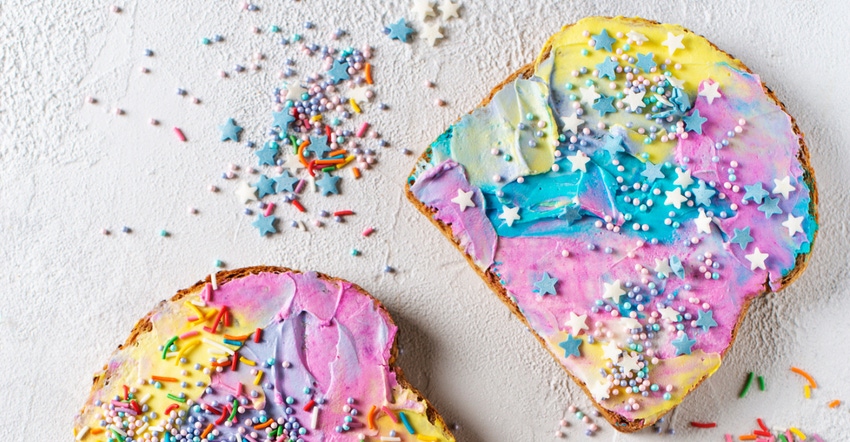We’re so over these 2018 food and beverage trends
Put on your grumpy pants, it’s time to embrace your inner curmudgeon.

If you’re an avid reader of this website, you likely know that we often explore food and beverage trends. We write about what’s happening now in the natural products industry, and also what trends are shimmering beyond the horizon, just about to rise.
With 2018 soon ending, it’s prime time to ponder food and beverage trends popular this year that are—or, in my opinion, should be—in the sunset of their lives. These are the trends that don’t seem to propel our industry forward in meaningful, inspiring ways or set us up for a better food system or improved environmental stewardship.
So put on your grumpy pants, it’s time to embrace your inner curmudgeon.
I’m over it: Permissible indulgence
I know, I know: We all love permissible snacking products. They’re booming in sales, and sure, if I’m going to eat a chocolate-covered almond, it might as well be made with fair trade, organic dark chocolate that’s dusted with functional reishi mushroom.
But the problem with permissible indulgence is that I—and many friends I unscientifically surveyed (which means I inquired, "Do you gorge on low-calorie cookies like I do?")—give myself too much permission with these products, resulting in a net health negative instead of a net health positive. For example, take your average low-calorie, high-protein ice cream alternative. Many brands depict on the front of the package the calorie count for the entire pint—a tactic that I personally believe encourages overconsumption of sweets.
I would rather have one serving (usually ¼ cup) of the most decadent, high-quality, consciously sourced ice cream around. I would savor every single bite, and I would feel so satisfied that I wouldn’t even want another scoop.
I’m over it: Squeeze packs
The portability and convenience of squeeze packs are hard to resist. Whether they contain nut butters or organic fruit and veggie purees, this relatively new type of package has in the past few years exploded in popularity across categories. From soups and sauces to snacks and even cat food (a delectable puree of chicken and tuna that your feline loves!), squeeze packs have largely replaced traditional glass, aluminum and even PET packages.
The problem, of course, is that squeeze packs aren’t easily recyclable—they’re made out of several layers of glued-together plastics and aluminum that cannot be placed in your blue bin. While some companies establish unique partnerships with recycling organizations such as TerraCycle (where users must mail-in their empty squeeze packs to be recycled), adoption rates for these types of programs are historically low. It’s not unreasonable to say that most squeeze packs end up in the landfill.
The good news: Many stakeholders in the natural products industry are actively working to find compostable alternatives. The bad news: In the meantime, squeeze packs are as popular as ever. Hopefully, 2019 will serve as a turning point for squeeze pack innovation.
I’m over it: “Unicorn food,” and other dishes made specifically for Instagram
Search for the tag “unicorn food” on Instagram and you’ll be rewarded with thousands of rainbow-tinted toasts, gorgeous multilayered smoothies featuring kaleidoscope designs constructed from nuts, seeds and frozen berries and psychedelic swirls of pastel frosting. Many of these crazy colors are tinted by natural ingredients, such as spirulina, turmeric and beetroot, and are made out of healthful fruits, veggies, non-dairy milks and protein powders.
Crazy-colored, meticulously crafted foods aren’t bad—they’re entertaining; they’re art. But their existence does start to feel like following a healthy diet takes a TON of work, when in reality it doesn’t. I want to see more Instagram influencers crafting ultra-healthy meals the way I—and I imagine a lot of busy consumers—actually cook: by throwing whatever we have in our fridge onto a sheet pan or in the cast iron and placing it atop a bed of organic salad greens. Voila, dinner. Or at least teach me how to make a delicious smoothie without making me feel bad that I threw some granola on top of it and called it a day.
I’m over it: Grain phobia
The paleo and keto movements are linked by a strong opposition to eating grains. Paleo argues that our paleolithic brethren 10,000 years ago didn’t consume grains because modern agriculture was not yet adopted; keto suggests that eating grains prevents your body from achieving ketosis—a metabolic process that uses fat instead of glycogen for fuel.
I’m not at all advocating that grain-free products go away—in fact, they’re continuously getting more delicious and texturally better every month. I love grain-free alternatives.
But–I think that paleo and keto diets, however, are missing out on the myriad benefits of nutrient-dense, intact heritage grains. Heavily refined, milled and bleached white wheat is worth eschewing. But I would like more Americans to embrace the bounty of ancient sorghum, barley, emmer, Khorasan wheat, teff, quinoa and more for their high-quality protein, essential minerals and vitamins and their resiliency against climate change.
About the Author(s)
You May Also Like




